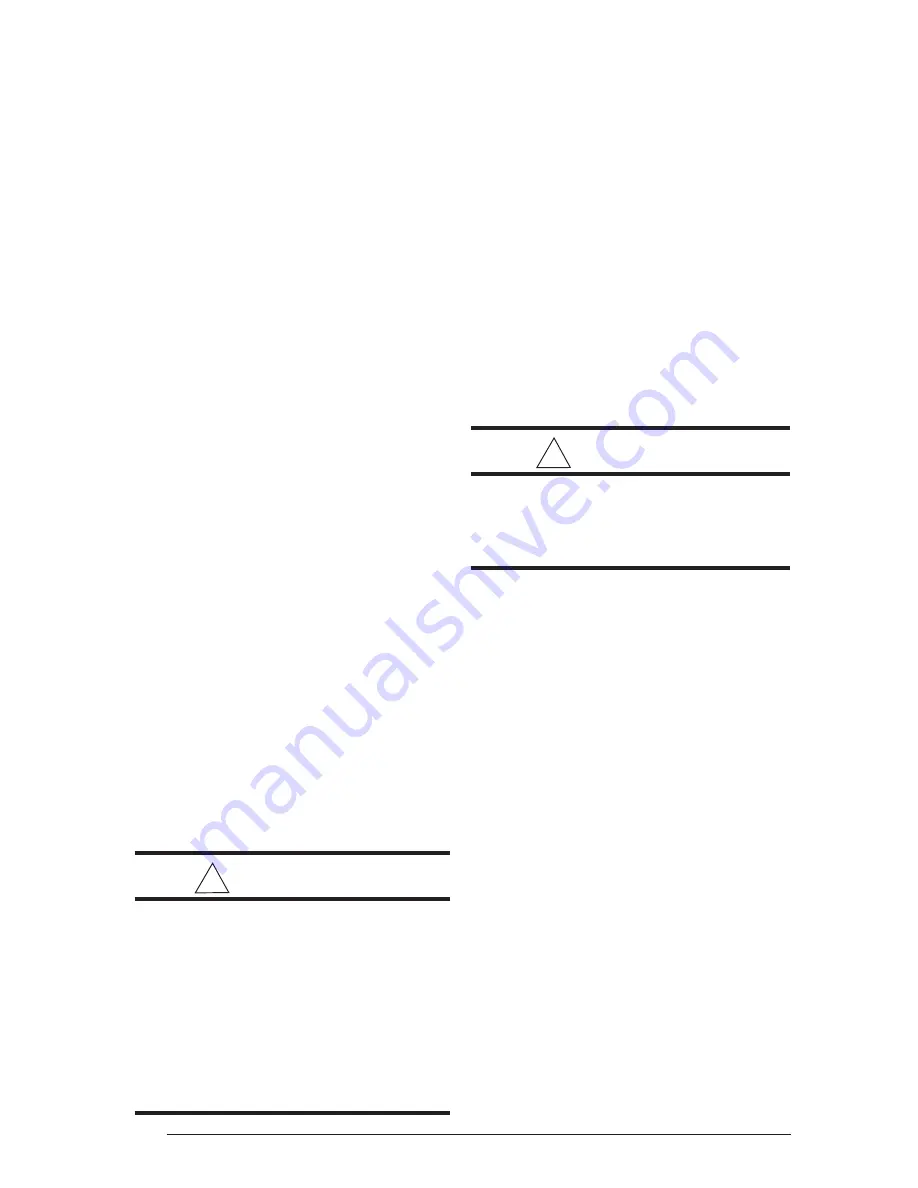
24
Air filter(s) are not supplied with the furnace
as shipped from the factory.
The installer must provide a high velocity filter
and rack for a filter in the return air duct adjacent
to the furnace, or in a return air grill to the
furnace. Filters should be changed or cleaned
monthly during the heating season. New or
newly renovated homes may require more
frequent changing until the construction dust
has been removed.
Filters for side return and bottom return
applications are available from your local
distributors.
Lubrication
The bearings in the circulating air blower motor
and inducer blower used in these furnaces are
pre-lubricated and sealed at the factory. No
further oiling of the bearings is required for the
life of the motor.
Blower Compartment
The blower compartment should be cleaned
monthly during the heating and cooling seasons
to remove any dirt and lint that may have
accumulated in the compartment or on the
blower and motor. Dirt and lint can create
excessive loads on the motor resulting in higher
than normal operating temperatures and
shortened service life.
Heat Exchanger and Burner Maintenance
The furnace should operate for many years
without soot buildup in the flue passageways,
however, the flue passageways, the vent
system, and the burners should be inspected
and cleaned (if required) by a qualified
serviceman annually to ensure continued safe
operation. Particular attention must be given to
identify deterioration from corrosion or other
sources.
!
WARNING:
Holes in the vent pipe or heat exchanger
can cause products of combustion to
enter the home. Replace the vent pipe
or heat exchanger if leaks are found.
Failure to prevent products of
combustion from being circulated into
the living space can create potentially
hazardous conditions including carbon
monoxide poisoning that could result in
personal injury or death.
Cleaning Of Flue Passages
If the flue passages must be cleaned, follow the
steps below. See Figure 14 for component
location and identification.
1.
Shut off the gas supply to the furnace either
at the meter or at the manual valve in the
gas supply piping.
2.
Turn off all power to the furnace and set the
thermostat to the lowest temperature
setting.
3.
Remove the louvered door from the furnace.
4.
Turn the gas control lever to the OFF
position.
5.
Disconnect the wires from the gas valve,
igniter, flame sensor, combustion air motor,
flame roll-out switch, over-temperature limit
switch, pressure switch.
!
CAUTION:
Label all wires prior to disconnection
when servicing controls. Wiring errors
can cause improper and dangerous
operation.
6.
Remove the silicone rubber tube from the
collector pan.
7.
Remove the screws that hold the vent
control assembly to the top panel.
8.
Remove the nuts that hold the combustion
air motor to the collector pan, and remove
the complete combustion air blower and
combustion tube assembly. BE CAREFUL
NOT TO BREAK THE SEALS AT EACH
END OF THE COMBUSTION AIR TUBE.
9.
Remove the screws that hold the collector
pan in place, and remove the collector pan
from the furnace.
10. Using wrenches, separate the ground-
joint union in the gas supply piping at the
furnace.
11. Remove the piping between the gas valve
and the ground-joint union, if necessary.
12. Remove the screws that hold the burner
assembly in place and remove the burner
assembly. BE EXTREMELY CAREFUL
NOT TO DAMAGE THE IGNITER WHILE
REMOVING THE BURNER ASSEMBLY.
13. The furnace heat exchanger tubes can
now be cleaned by the use of a round wire



































